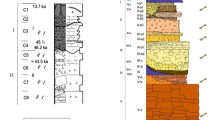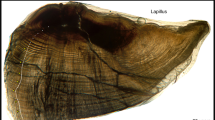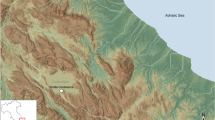Abstract
A WORD of warning is necessary when the number of cementum rings in the canine teeth of seals is used to determine the age of some species of Phocidae. As Mansfield and Fisher1 have stated, they were able to count 18–20 rings in a tooth of a harbour seal (P. vitulina L.) of 19 years of age. For practical purposes this is good enough in the higher range of years, but the possible error becomes disproportionately large if applied to years 1–10 ; years which contain the critical years of sexual maturity both potential and actual. Great care is needed in assessing the age of young seals, since the doubt inherent in the statement ‘18–20’ is derived from real difficulties met with in counting the rings deposited in the earlier years of life, and in assessing the value of the ‘last’ ring.
This is a preview of subscription content, access via your institution
Access options
Subscribe to this journal
Receive 51 print issues and online access
$199.00 per year
only $3.90 per issue
Buy this article
- Purchase on Springer Link
- Instant access to full article PDF
Prices may be subject to local taxes which are calculated during checkout
Similar content being viewed by others
References
Mansfield, A. W., and Fisher, H. D., Nature, 186, 92 (1960).
Laws, R. M., Falkland Is. Depend., Survey, Sci. Rep., 2 (1953).
Matheson, C., Nature, 166, 73 (1950).
Author information
Authors and Affiliations
Rights and permissions
About this article
Cite this article
HEWER, H. Age Determination of Seals. Nature 187, 959–960 (1960). https://doi.org/10.1038/187959b0
Issue Date:
DOI: https://doi.org/10.1038/187959b0
This article is cited by
-
Status of the Grey Seal
Nature (1961)
Comments
By submitting a comment you agree to abide by our Terms and Community Guidelines. If you find something abusive or that does not comply with our terms or guidelines please flag it as inappropriate.



